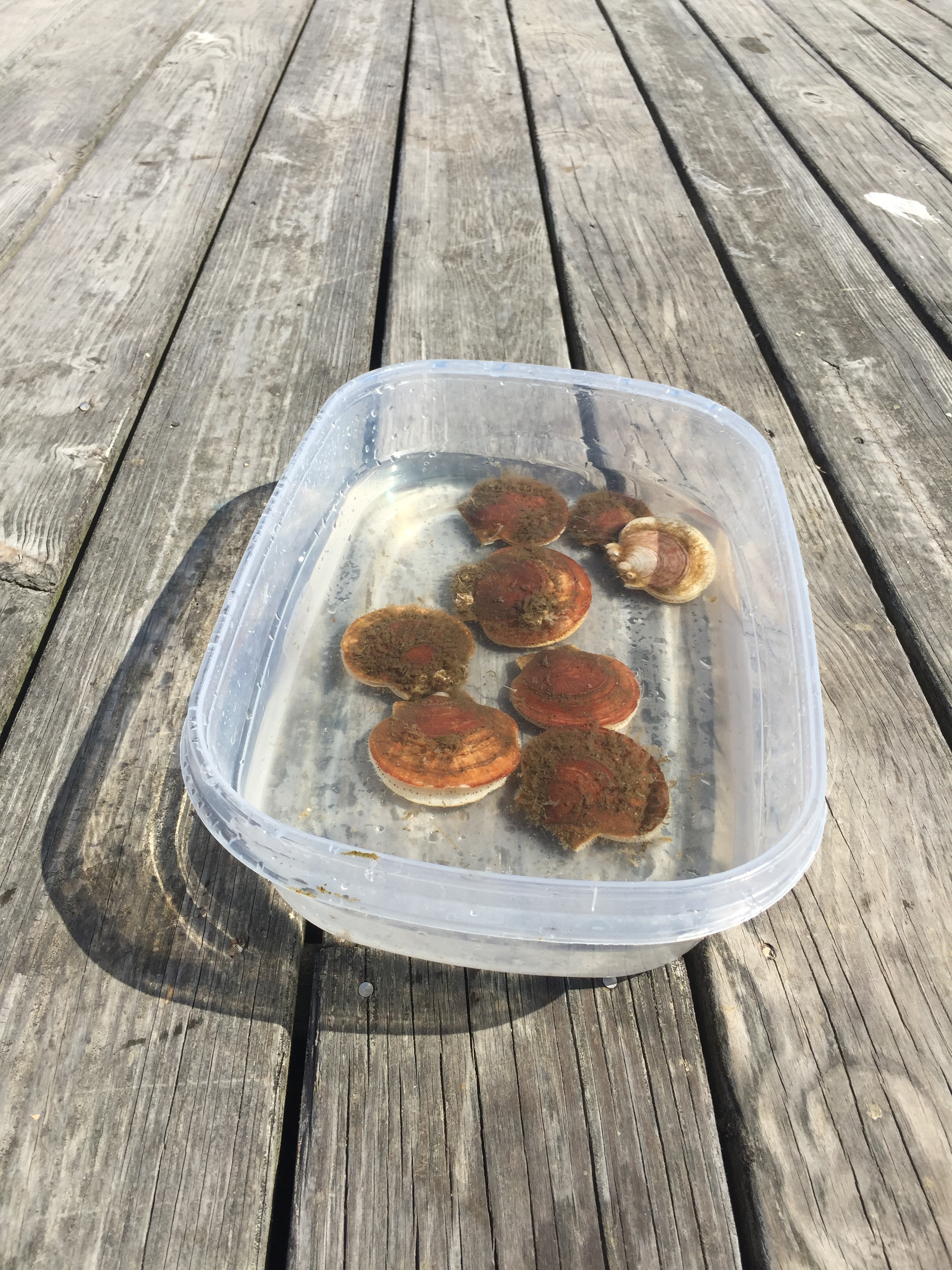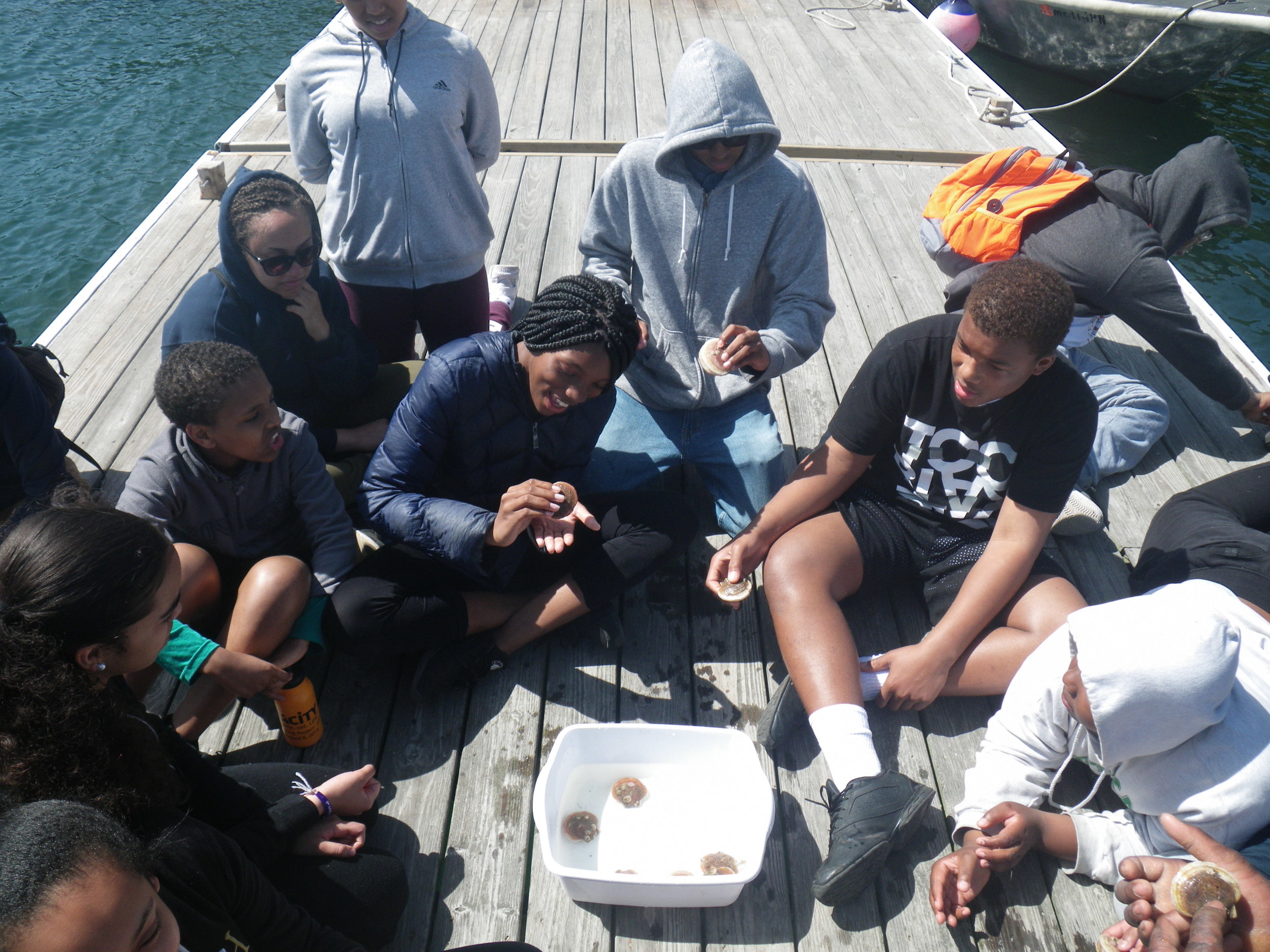Innovation Academy is a public charter school in Tyngsboro, Mass. One of the distinguishing characteristics of the school is its “Endersession” program. Each year in June, one week is dedicated not to classes, but to a weeklong end of year session or endersession of the students’ choice. Teachers propose endersessions and then students sign up. Some of these sessions involve road trips and off campus excursions, while others are based on campus for cooking classes and daily museum visits. For this first time this year, one of the endersessions visited Hurricane Island and we had a great week.
Scenic rowing in Penobscot Bay
Of the ten Innovation students on Hurricane, some selected the Hurricane trip due to their love of science, while others pursued our trip for their love of the outdoors. Many of them were eager to embrace new experiences in a different setting, and some of them were out of their comfort zones.
My two favorite experiences of the week were our sessions around scallop aquaculture and when we went lobstering. During our scallop aquaculture discussion, students were actively participating and thinking critically about fisheries and aquaculture opportunities. We went down to the dock to pull up the lantern net holding our scallops, something I have done dozens of times, and the students immediately expressed their excitement and interest in the clapping, squirting critters. Sometimes I forget how profound an impact the scallops can have on first impression so I appreciated experiencing the fun again with Innovation students.
Students examine these lobsters and determine they are too small to keep.
Later in the week, we went lobstering, and the students were so animated, curious, and excited as we hauled traps and held the lobsters, examining their anatomy and assessed whether they were legal size. As we progressed through the lobstering and scallop aquaculture sessions, the students’ positive energy fueled me and I had fun as an educator and a facilitator. Innovation’s endersession took place during our last week of school programs before we kicked off our summer season, and I am grateful for the curiosity and positivity with which we ended our own school year.




















